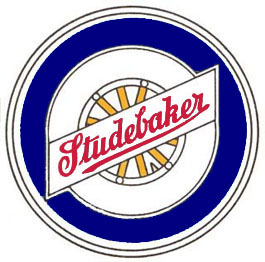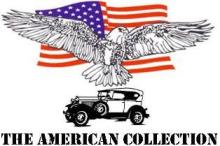The Avanti coupe was glass fibre bodied American sports car, with a distinctly European appearance, produced in the final years of the floundering Studebaker company. Although it made little impact on the firm’s tottering finances, so advanced were its specifications that the car does not look out of place to-day.
Studebaker, who had been building cars at South Bend, Indiana since 1904, was in deep financial trouble when in 1961 it acquired a new president named Sherwood H. Egbert. He wasted little time in commissioning the Avanti which was to be one of the companies most famous cars. From 1936 until 1955 Studebaker had retained the services of leading American industrial designer, the French born Raymond Loewy, to style its products and Egbert was quick to renew the association. The outcome, announced at the 1962 New York Auto Show, was the strikingly unconventional Avanti (which significantly is the Italian word for “forward”).
The most striking feature of the glass-fibre body was the apparent absence of a radiator grille. Instead, in the interest of good aerodynamics the air intake was located beneath the front bumper. There was no external decoration; the car featured a sharp wing line, a so-called “Coke bottle” shape and a large rear window. The interior was similarly distinctive and possessed an aviation flavour: the white on black instruments bathed in a soft red light for night driving and controls placed, aircraft style, in the roof.
Only 3,834 Avanti were built in 1963 and in November Egbert retired from Studebaker presidency suffering from cancer. A further 809 examples were built in 1964 but it was decided to transfer Studebaker production to the company’s factory at Hamilton , Canada and cars continued to be built there until 1966.
This did not include the Avanti, however, because in 1965 two South Bend Studebaker dealers bought the jigs and tooling. Later in the same year came Avanti II, built at South Bend until 1987, 25 years after the Avanti first appeared.

1/25th scale kit.
Built by Rod.
Rod built this model in the 1970’s so it is all brush painted and tube glued. Rods brush painting improved over the years but the slow drying nature of Humbrol gloss enamel paints often allows dust to settle into the finish. Now we use Halfords car spray paints but then things were very different, cellulose based car paints simply ate into the plastic. To get the best from brush painting always prepare and airtight container large enough to cover you model to minimise dust contamination, brush in the same direction as much as possible and avoid using too much paint. It is better to build up several thin coats than one heavy one. These days there are several polishing systems available to help smooth out and polish brush painted finishes. Note the use of matt black paint in the front grill to give this area depth and realism. Brush on the matt paint and as it dries gently rub it off the raised detail leaving it in the recesses.
Also unavailable back then were the ranges of satin colours. Leather and cloth combination interiors could only be replicated with gloss and matt paints. Rod had yet to use dry brushing and washes to help give depth and realism to models.
RETURN TO -
